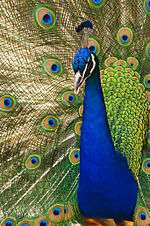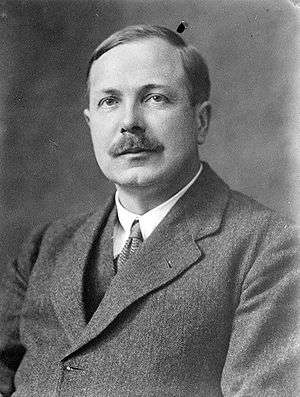The Genetical Theory of Natural Selection
| Author | Ronald Fisher |
|---|---|
| Country | United Kingdom |
| Language | English |
| Subject | Evolutionary biology |
| Publisher | The Clarendon Press |
Publication date | 1930 |
| Media type | |
| OCLC | 18500548 |
| 575.423 | |
| LC Class | QH366 .F5 |
| Preceded by | Statistical Methods for Research Workers |
| Followed by | The Design of Experiments |
The Genetical Theory of Natural Selection is a book by Ronald Fisher which combines Mendelian genetics with Charles Darwin's theory of natural selection,[1] with Fisher being the first to argue that "Mendelism therefore validates Darwinism"[2] and stating with regard to mutations that "The vast majority of large mutations are deleterious; small mutations are both far more frequent and more likely to be useful", thus refuting orthogenesis.[3] First published in 1930 by The Clarendon Press, it is one of the most important books of the modern evolutionary synthesis,[4] and helped define population genetics. It is commonly cited in biology books, outlining many concepts that are still considered important such as Fisherian runaway, Fisher's principle, reproductive value, Fisher's fundamental theorem of natural selection, Fisher's geometric model, the sexy son hypothesis, mimicry and the evolution of dominance. It was dictated to his wife in the evenings as he worked at Rothamsted Research in the day.[5]
Contents

In the preface, Fisher considers some general points, including that there must be an understanding of natural selection distinct from that of evolution, and that the then-recent advances in the field of genetics (see history of genetics) now allowed this. In the first chapter, Fisher considers the nature of inheritance, rejecting blending inheritance, because it would eliminate genetic variance, in favour of particulate inheritance. The second chapter introduces Fisher's fundamental theorem of natural selection. The third considers the evolution of dominance, which Fisher believed was strongly influenced by modifiers. Other chapters discuss parental investment, Fisher's geometric model, concerning how spontaneous mutations affect biological fitness, Fisher's principle which explains why the sex ratio between males and females is almost always 1:1, reproductive value, examining the demography of having girl children. Using his knowledge of statistics, the Fisherian runaway, which explores how sexual selection can lead to a positive feedback runaway loop, producing features such as the peacock's plumage. He also wrote about the evolution of dominance, which explores genetic dominance. The last five chapters (8-12) include Fisher's more idiosyncratic views on eugenics.
Editions
A second, slightly revised edition was republished in 1958. In 1999, a third variorum edition (ISBN 0-19-850440-3), with the original 1930 text, annotated with the 1958 alterations, notes and alterations accidentally omitted from the second edition was published, edited by professor John Henry Bennett of the University of Adelaide.
Dedication

The book is dedicated to Major Leonard Darwin, Fisher's friend, correspondent and son of Charles Darwin, "In gratitude for the encouragement, given to the author, during the last fifteen years, by discussing many of the problems dealt with in this book."
Reviews
Reviewed by Charles Galton Darwin, who sent Fisher his copy of the book, with notes in the margin, which initiated a correspondence lasting several years.[6] This book also had a major influence on W. D. Hamilton's theories on the genetic basis of kin selection.
John Henry Bennett gave an account of the writing and reception of the book.[7]
Sewall Wright, who had many disagreements with Fisher, reviewed the book and wrote that it was "certain to take rank as one of the major contributions to the theory of evolution."[8] J. B. S. Haldane described it as "brilliant."[9] Reginald Punnett was negative, however.[10]
The book was largely overlooked for 40 years, and in particular Fisher's fundamental theorem of natural selection was misunderstood. The work had a great effect on W. D. Hamilton, who discovered it as an undergraduate at the University of Cambridge[11] and noted in these excerpts from the rear cover of the 1999 variorum edition:
- This is a book which, as a student, I weighed as of equal importance to the entire rest of my undergraduate Cambridge BA course and, through the time I spent on it, I think it notched down my degree. Most chapters took me weeks, some months;...And little modified even by molecular genetics, Fisher's logic and ideas still underpin most of the ever broadening paths by which Darwinism continues its invasion of human thought.
- For a book that I rate only second in importance in evolution theory to Darwin's "Origin" (this as joined with its supplement "of Man"), and also rate as undoubtedly one of the greatest books of the twentieth century the appearance of a variorum edition is a major event....
- Unlike in 1958, natural selection has become part of the syllabus of our intellectual life and the topic is certainly included in every decent course in biology. By the time of my ultimate graduation, will I have understood all that is true in this book and will I get a First? I doubt it. In some ways some of us have overtaken Fisher; in many, however, this brilliant, daring man is still far in front.
The publication of the variorum edition in 1999 led to renewed interest in the work and reviews by Laurence Cook,[12] Brian Charlesworth,[13] James F. Crow,[14] and A. W. F. Edwards.[1]
References
- 1 2 Edwards, A. W. F. (April 2000). "The Genetical Theory of Natural Selection". Genetics. Bethesda, MD: Genetics Society of America. 154 (4): 1419–1426. ISSN 0016-6731. PMC 1461012
 . PMID 10747041.
. PMID 10747041. - ↑ The Structure of Evolutionary Theory (2002) by Stephen Jay Gould, Chapter 7, section "Synthesis as Restriction" Gould quotes Fisher “The whole group of theories which ascribe to hypothetical physiological mechanisms, controlling the occurrence of mutations, a power of directing the course of evolution, must be set aside, once the blending theory of inheritance is abandoned. The sole surviving theory is that of Natural Selection” The Genetical Theory of Natural Selection (1930, p. 20)
- ↑ The Structure of Evolutionary Theory (2002) by Stephen Jay Gould, Chapter 7, section "Synthesis as Restriction" Gould further quotes Fisher “For mutations to dominate the trend of evolution it is thus necessary to postulate mutation rates immensely greater than those which are known to occur, and of an order of magnitude which, in general, would be incompatible with particulate inheritance” The Genetical Theory of Natural Selection (1930, p. 20)
- ↑ Grafen & Ridley 2006, p. 69
- ↑ "Sir Ronald Aylmer Fisher". History of Statistics & Probability. Minneapolis, MN: University of Minnesota. Retrieved 2015-11-25.
- ↑ Fisher 1999, Appendix 2
- ↑ Bennett 1983, Introduction
- ↑ Wright, Sewall (August 1930). "The Genetical Theory of Natural Selection: A Review" (PDF). Journal of Heredity. Oxford, UK: Oxford University Press for the American Genetic Association. 21 (8): 349–356. ISSN 0022-1503. Retrieved 2015-11-25.
- ↑ Haldane 1932
- ↑ Punnett, Reginald (October 18, 1930). "The Genetical Theory of Natural Selection". Nature (Book review). London: Nature Publishing Group. 126 (3181): 595–597. doi:10.1038/126595a0. ISSN 0028-0836.
- ↑ Grafen, Alan (2004). "William Donald Hamilton" (PDF). Biographical Memoirs of Fellows of the Royal Society. London: Royal Society. 50: 109–132. doi:10.1098/rsbm.2004.0009. ISSN 0080-4606. Retrieved 2015-11-25.
- ↑ Cook, Laurence (March 2000). "The Genetical Theory of Natural Selection — A Complete Variorum Edition". Heredity (Book review). London: Nature Publishing Group. 84 (3): 390–391. doi:10.1046/j.1365-2540.2000.0713b.x. ISSN 0018-067X.
- ↑ Charlesworth, Brian (2000). "The Genetical Theory of Natural Selection. A Complete Variorum Edition. By R. A. Fisher (edited with foreword and notes by J. H. Bennett). Oxford University Press. 1999. ISBN 0-19-850440-3. xxi+318 pages. Price £25.00". Genetical Research (Book review). Cambridge, UK: Cambridge University Press. 75 (3): 369–373. doi:10.1017/s0016672300219228. ISSN 0016-6723. Retrieved 2015-11-26.
- ↑ Crow, James F. (May 1, 2000). "Second only to Darwin: The Genetical Theory of Natural Selection. A Complete Variorum Edition by R.A. Fisher". Trends in Ecology & Evolution (Book review). Cambridge, MA: Cell Press. 15 (5): 213–214. doi:10.1016/S0169-5347(00)01842-5. ISSN 0169-5347.
Bibliography
- Bennett, J. H. (1983). Natural Selection, Heredity, and Eugenics: Including Selected Correspondence of R.A. Fisher with Leonard Darwin and Others. Oxford Science Publications. Oxford, UK; New York: Clarendon Press; Oxford University Press. ISBN 0-19-858177-7. LCCN 83004165. OCLC 9393205.
- Fisher, R. A. (1999). The Genetical Theory of Natural Selection. Edited with an foreword and notes by J. H. Bennett (A complete variorum ed.). Oxford, UK: Oxford University Press. ISBN 0-19-850440-3. LCCN 00702764. OCLC 45308589.
- Grafen, Alan; Ridley, Mark, eds. (2006). Richard Dawkins: How a Scientist Changed the Way We Think. Oxford, UK; New York: Oxford University Press. ISBN 978-0-19-929116-8. LCCN 2005033395. OCLC 62322400.
- Haldane, J. B. S. (1932). The Causes of Evolution. London; New York: Longmans, Green & Co. LCCN 32033284. OCLC 5006266. "This book is based on a series of lectures delivered in January 1931 at the Prifysgol Cymru, Aberystwyth, and entitled 'A re-examination of Darwinism'."
External links
| Wikiquote has quotations related to: The Genetical Theory of Natural Selection |